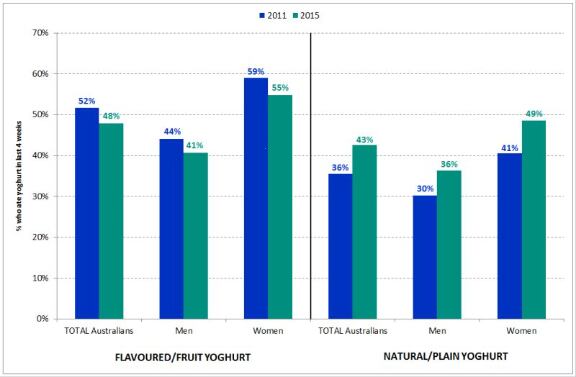In a study published in the latest issue of the international journal Obesity, Deakin University sensory scientists have shown for the first time that it is possible to increase the ability of overweight and obese people to taste fat by altering their diet.
These results build on a growing body of research that has previously identified fat as part of the tongue’s taste range along with sweet, salt, sour, bitter and umami.
According to Russell Keast, head of Deakin’s Centre for Advanced Sensory Science, people who do not taste fat in food are more likely to overeat.
“It is becoming clear that our ability to taste fat is a factor in the development of obesity,” said Professor Keast.
“The results of this recent study, along with previous work, point to increasing fat taste sensitivity in those who are insensitive as a target for obesity treatment and prevention.”
For the current study, the scientists assessed the effect of a six week low-fat or portion-controlled diet on fat taste thresholds, fat perception and food preference in 53 overweight and obese people.
For six weeks, the participants were randomly allocated either a low-fat diet with less than 25% of kilojoules delivered from fat, or a portion controlled diet with 33% of kilojoules from fat and designed to reduce energy intake by 25 per cent.
Their fat taste thresholds—the lowest fat concentration they could detect—along with perception of fat levels in food samples and preference for low-fat and regular fat foods were assessed before and after the diet, as well as height, weight, waist and hip measurements.
The scientists found that the fat taste thresholds decreased for participants on both diets, with the effect strongest for those on the low-fat diet. The ability to perceive different fat concentrations in foods increased only for those on the low-fat diet.
Participants on both diets lost around the same amount of weight, with 2.9% weight reduction in the low-fat diet group and 2.7% for the portion control group.
Lisa Newman, who conducted the study for her PhD, said these results showed that it was possible to train the body to be sensitive to the taste of fat through diet.
“This could then lead to people being less inclined to fatty foods, which in turn could impact on not only reducing weight in people already overweight or obese, but also in preventing weight gain in the first instance,” Dr Newman said.
More stories from Down Under…
Blackmores and Bega launch infant nutrition products
Blackmores has partnered with dairy manufacturer Bega to develop a range of infant formulas with an emphasis on supplying the Australian market.

Australian pharmacies, which will be the first to receive delivery of the new formulas, will get more than 80% of the total available supply at a time when domestic manufacturers are exporting vast quantities to Asia.
The partnership with Bega will be an important source of supply for the Australian infant nutrition market, said Blackmores chief executive, Christine Holgate.
“We are conscious of the supply challenges in this category and the Blackmores and Tatura teams will work together to help ensure the continued supply of this range,” she said.
The products will also be sold in Asia through Alibaba’s Tmail Global platform.
In addition to the new infant nutrition line, Blackmores is now offering the services of a breastfeeding counsellor through a freecall advisory.
“Blackmores supports breastfeeding as optimal nutrition for babies, though it’s also important to have a high quality offering for when breastfeeding is not possible,” added Holgate.
Sugar-awareness likely behind drop in popularity of flavoured yoghurts
Flavoured yoghurts have been witnessing a downward slide over the last few years in Australia, while plain varieties have seen a general upswing, according to new market research.

In 2015, 48% of Australians ate at least one flavoured yoghurt each month, compared to 52% in 2011. Over the same period, the proportion eating natural or plain varieties surged from 36% to 43%, closing the gap on the traditionally more popular rival.
Natural yoghurt’s newfound popularity appears to be an equal-opportunity phenomenon, with ever-increasing numbers of men and women picking it. Between October 2010 and September 2015, the proportion of Australian men who ate natural yoghurt in an average month grew from 30% to 36%, while the figure for women rose from 41% to 49%.
While plain yoghurt consumption grew among all age groups except young men aged under-25, the most dramatic increases occurred among men and women aged between 25 and 34 years, followed closely by the 65-plus age bracket.

The frequency with which Australians eat plain yoghurt has also grown over the last few years. Some 23% of natural-yoghurt eaters now consume it on a daily basis—up from 17% in 2011—to almost the same proportion as flavoured yoghurt (25%).
Weekly consumption has grown from 29% to 30% over the same timeframe, though still short of flavoured yoghurt (34%)
“The gap is closing,” said Michele Levine, chief executive of Roy Morgan Research, which carried out the survey. “This increased tendency towards natural/plain yoghurt may well be the result of the public becoming more aware of the hidden sugars in so many flavoured yoghurts, or part of a broader move towards more ‘natural’ foods.
“It is certainly noteworthy that Aussies who eat natural yoghurt every day are nearly 50% more likely than the average Australian to agree that ‘I try to buy organic food whenever I can’.”
Daily consumers of natural yoghurt are also twice as likely to eat all, or almost all, vegetarian food, suggesting that there is a conscious thought process behind their decision.
Fsanz seeks submissions on GM corn and irradiated food labelling
The antipodean food regulator has called for opinions on a genetically modified corn line and released a consultation paper on the existing labelling requirements for irradiated foods.

Steve McCutcheon, chief executive of Fsanz, said the GM corn had been made tolerant to glufosinate ammonium and could resist pests such as the western corn rootworm.
“Fsanz conducted a thorough safety assessment on the application, which included comparing the GM corn with a non-GM corn from a molecular, toxicological and nutritional point of view,” McCutcheon said.
“The aim of the assessment was to find out if there are any differences between the GM food and its conventional counterpart. No public health or safety issues were identified and the corn was found to be as safe as its conventional counterpart.”
Concerning the paper on irradiated foods, McCutcheon explained that food ministers had asked the regulator to review the requirements in response to a labelling review recommendation.
“It’s important to note that no change to requirements is being proposed at this stage,” he said, adding that he expects to provide ministers with a report in the second-half of 2016.
“Fsanz is seeking submissions on a range of technical and economic issues related to the mandatory requirements and how information about food irradiation is communicated to consumers.”
Government agencies, public health professionals, the food industry and the community are asked to provide submissions on GM corn and irradiated food labelling.
All Fsanz decisions on standards are notified to ministers responsible for food regulation, who can then decide to adopt, amend, or reject standards or they can ask for a review.
The closing date for submissions on both issues is March 29.
Meanwhile, Fsanz has announced the results of a survey on food packaging chemicals, which McCutcheon said were reassuring for consumers.
“There were no detections at all for half of the 30 chemicals tested,” the chief executive said of the second phase of the Australian Total Diet Study, which looked at chemicals that might migrate from packaging into food.
“We detected very low residues of some chemicals in a small number of samples. After undertaking a very conservative safety assessment on these very low levels, Fsanz has concluded there are no safety concerns.”
However, the screening study identified that further work was required for two of the phthalates chemicals it tested for, and the regulator will now sample a wider range of foods for these as part of a full dietary exposure assessment.
“The results will inform an ongoing review of current food packaging regulations,” McCutcheon added.
Complementary health backs call for more vitamin D self-medication
With up to 58% of Australians found to suffer from vitamin D deficiency, the complementary medicines industry has welcomed a new article published in the Medical Journal of Australia that encourages proactive vitamin D supplementation, rather than testing for patients seen to be at risk of deficiency.

Generally known as the sunshine vitamin, vitamin D is most commonly absorbed into the body through the skin from the sun’s rays, though increased awareness of the threat of skin cancers has led to more people covering up.
“It is no longer acceptable to assume that Australians receive adequate vitamin D from casual exposure to sunlight,” said Carl Gibson, chief executive of Complementary Medicines Australia, which represents the natural nutrition industry.
“A responsible approach is to acknowledge that a large proportion of the population is vitamin D deficient and not just those at high risk. This is where vitamin D fortified foods and supplements come into the disease prevention equation.”
More Australians should be supplementing vitamin D as a simple and cost-effective approach to avoiding deficiencies, Gibson added.
In the MJA InSight article, a leading epidemiologist argued that a “hard-core group of general practitioners continue to over-test” for vitamin D.
Yet Robyn Lucas, of the Australian National University’s College of Medicine, Biology and Environment, added that the “craziness” about vitamin D had now settled.
“Everyone got very excited for a while and blamed vitamin D for everything”, she said. “Reality has hit, however, and the vitamin D bubble has burst.”
Professor Lucas cited an MJA article that revealed that the frequency of vitamin D testing had risen “dramatically” in Australia between 2000 and 2010, though this had not translated into improved health outcomes.
This testing corresponded to a significant cost to the healthcare system even though vitamin D deficiency at its most severe was only found to be present in around 4% of the population, according to Steven Boyages of the the Western Sydney Local Health District, the cited article’s author.
Gibson said: “Australia’s population is ageing and increasingly challenged by chronic health conditions. Preventive health is an essential element of the healthcare system and necessary to alleviating pressure on the government’s health budget.”
